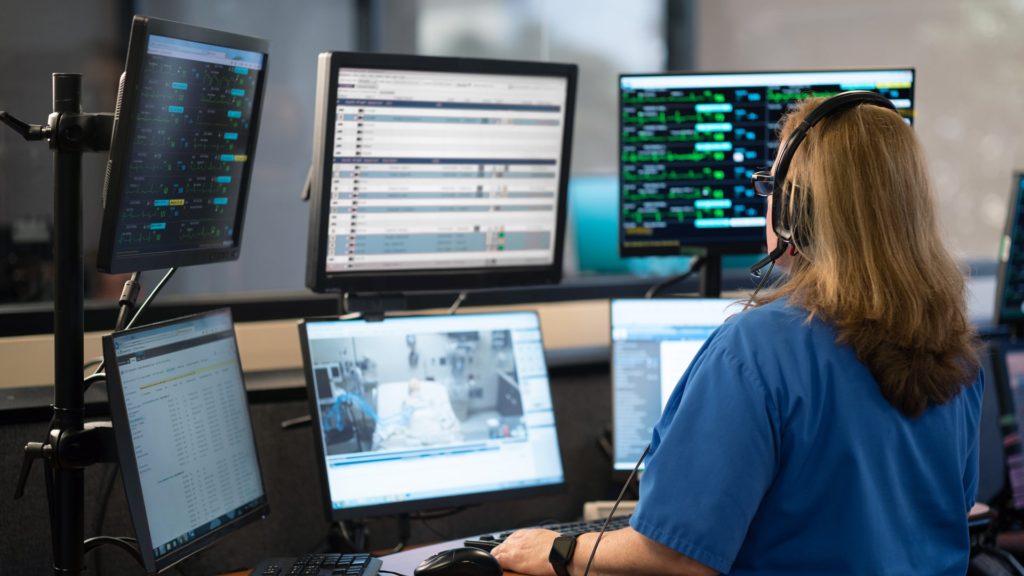 The exploding plastic inevitable comes to its inevitable end. 23andMe’s board filed for a Chapter 11 bankruptcy with the Eastern District of Missouri (!) Federal bankruptcy court on Sunday night (Case 25-40976). Anne Wojcicki, CEO, 49% controlling shareholder, and board member, stepped down from the CEO position, but remains on the board. Interim CEO is Joseph Selsavage, 23andMe’s chief financial and accounting officer, according to their SEC Form 8-K filing.
The exploding plastic inevitable comes to its inevitable end. 23andMe’s board filed for a Chapter 11 bankruptcy with the Eastern District of Missouri (!) Federal bankruptcy court on Sunday night (Case 25-40976). Anne Wojcicki, CEO, 49% controlling shareholder, and board member, stepped down from the CEO position, but remains on the board. Interim CEO is Joseph Selsavage, 23andMe’s chief financial and accounting officer, according to their SEC Form 8-K filing.
In their announcement, 23andMe will, with court approval, actively solicit asset sales over a 45 day period.
Anne Wojcicki’s final non-binding proposals on 10 and 11 March were rejected by the Special Committee of the board of directors evaluating asset sales and now the bankruptcy.
Anne Wojcicki’s statement on X early on Monday morning was of a piece with her statements as 23andMe entered its death spiral starting in 2023. “We have had many successes but I equally take accountability for the challenges we have today. There is no doubt that the challenges faced by 23andMe through an evolving business model have been real, but my belief in the company and its future is unwavering.” In her post, she also said that she would bid for assets sold by the company. 23andMe has not issued any further statement or response to their former CEO’s comments.
The Chapter 11 versus 7 filing means that 23andMe will continue to operate as it sells assets and eventually shuts. It will be up to the board–including Ms. Wojcicki–and the bankruptcy judge regarding the disposition of the company’s assets, which include teleprescriber Lemonade and the large 23andMe genetic database. Those assets and liabilities essentially cancel each other out: $100-500 million in assets and the same in liabilities, according to the filing.
And about that large genetic database–the California attorney general Rob Bonta has already advised California 23andMe registered users to delete their data and request their samples to be destroyed. However, as previous articles have discussed, your data remains–de-identified, which the AG’s statement doesn’t go into in its “reminder” (more like a press opportunity for a 2026 reelection bid?). Mercury News See today’s update for how-tos–and experiences in deletion.
23andMe has stated that it will not change the way that consumer data is stored or safeguarded, and will continue to operate as usual through the Chapter 11 process. They published an ‘open letter’ blog for customers that positions them as finding “a partner (Editor’s emphasis) who shares our commitment to customer data privacy and allows our mission of helping people access, understand and benefit from the human genome to live on.” which is frankly, misleading.
Perhaps the Chapter 11 is saving Ms. Wojcicki from a tremendous financial mistake in buying out the rest of the common shareholders, though the filing wipes out her investment in the company. It will be interesting to see the court’s comments on the ownership of what at its peak was a $6 billion-valued public company. CNBC
This story is developing, but has developed ‘legs’ like Theranos in terms of mainstream impact. When YouTube tarot card readers are covering it….
Updates 25-26 March
MedCityNews yesterday recapped the various Wojcicki-led efforts to take the company private as Readers have been following, with the interesting addition that by 10 March, at least one minority shareholder, Zentree Investments, felt slighted. Zentree then bought more Class A stock to boost its ownership stake to 13%. (I wonder how they woke up on Monday.) Unfortunately, there were no further insights on why New Mountain Capital retreated from its short-lived offer to buy 23andMe with Ms. Wojcicki that went sideways by 28 February. (Perhaps someone found something that led to the mutual conclusion of ‘Are we crazy?’)
The first hearing before the bankruptcy court, the Debtors’ First Day Motions, will be tomorrow, Wednesday 26 March, in St. Louis before the Honorable Brian C. Walsh.
There is no hint of a pre-packaged bankruptcy leading to a reorganization of the business in any of the materials linked below.
From the Form 8-K and the Kroll case summary (Kroll is the claims agent for the company):
- 23andMe has agreed with a lender, JMB Capital Partners Lending, LLC, to obtain up to $35 million in a senior secured term loan credit facility (DIP Facility). The debtor-in-possession financing from JMB is to pay for the Chapter 11 administrative costs and for working capital. This is subject to the bankruptcy court’s approval.
- Subsidiaries of 23andMe (such as Lemonaid) will continue to operate. Lemonaid Health and two pharmacy operations are listed as debtors in the filing.
- On 21 March, Joseph Selsalvage was paid a retention cash bonus of $500,000 for his services through 31 December this year or 23andMe’s emergence from bankruptcy, whichever is earliest. If he leaves before the end of the retention period or is terminated for cause, the entire amount will be clawed back. The only exceptions are death, disability, or departure for ‘good reason’ as defined in the retention agreement.
- The board was increased to five members, adding Thomas B. Walper as a non-employee member of the board and the Special Committee (formed for buyers) through the 2027 shareholders meeting. He will be paid $35,000 per month. Mr. Walper is a partner at Los Angeles’ Munger, Tolles & Olson LLP and specializes in bankruptcy law.
- Any transaction will be subject to customary regulatory approvals, including, as applicable, the Hart-Scott-Rodino Act and the Committee on Foreign Investment in the United States.
From the 23andMe release:
- The Special Committee rejected Anne Wojcicki’s final bids in the amended Schedule 13D made on 10 and 11 March.
- The company in the Chapter 11 will sell substantially all of its assets in a Section 363 sale.
- Matt Kvarda, a managing director at Alvarez & Marsal, was appointed as chief restructuring officer.
- First day motions (tomorrow) include requesting from the court authority to pay employees and certain vendors, reducing operating expenses such as real estate leases, and resolving all outstanding legal liabilities stemming from their October 2023 cyber incident.
Since 23andMe’s database includes personally identifiable information and Lemonaid stores medical information as a prescriber of various remedies, it is possible, but to be confirmed, whether Federal entities such as HHS will be involved in approvals of asset sales that have patient information. Those who submitted their tests for genetic analysis are not covered by HIPAA and in fact signed away many of their privacy rights in their submission.
Information on deleting your user records if you used 23andMe, or you know someone who needs to know how:
Contrary to what many would like to have or to believe, 23andMe retains parts of user information after user deletion, such as: genetic information, date of birth, and gender “as required for compliance”; deletion request information “including but not limited to, your email address, account deletion request identifier, communications related to inquiries or complaints and legal agreements.”
Despite this, deleting your account is the wisest move, according to every expert this Editor has read.
Basically, you are deleting your account, revoking any research consent, and destroying any samples they may have retained. Simple, eh? Not quite! Step-by-step how-to guides are available on ZDNet (simplest) and TechCrunch (scroll to the end). This Editor cannot test as she never used 23andMe. Arundhati Parmar of MedCityNews‘ experience in attempting this process is chronicled in a LinkedIn video and on TikTok. Expect website crashes, slow responses at best, and more than a few hitches.
New FierceHealthcare’s Dave Muoio riffs on the data privacy issues which can be summarized as a “data stewardship crisis”. The few protections that members/users have are based on consumer protection laws. 23andMe’s privacy policy, as noted above, was explicit about the minimal protection they offered and that they had the right to access, disclose to others, and sell your genetic information: “your Personal Information may be accessed, sold or transferred as part of that transaction and this Privacy Statement will apply to your Personal Information as transferred to the new entity. We may also disclose Personal Information about you to our corporate affiliates to help operate our services and our affiliates’ services.” Mr. Muoio reached out to experts at SOCRadar, QuantHealth, the Future of Privacy Forum, the Holland & Knight law firm, Pixel Privacy, and others. The consensus is that state and Federal safeguards are wholly inadequate.
Editor’s opinion:
23andMe’s cavalier attitude during their 2023 data breach, caused by their sloppy security (well documented by others and analyzed in our article here with previous articles linked within it) but blamed by their management on members reusing passwords, was symptomatic of a certain arrogance and attitude. By 2023, the company was already in trouble. Why would anyone believe that they’d be any less cavalier about personal genetic information?
Will this be another ‘watershed’ event like Theranos? The level of mainstream consumer media coverage the 23andMe bankruptcy has received reminds this Editor of the demise of Theranos. But here, there is no glamorous young founder in a black turtleneck jetting about and working in a Silicon Valley high-tech lab perpetrating a fraud. Here, the founder and key shareholder is a mature wealthy woman who kept a fairly low profile, the technology worked, the consumer business broke fresh consumer ground and, for its time, getting your genetic information and ancestry was a popular concept. GSK’s five year deal was completed–not renewed, but no lawsuits ensued. What was way off was its $6 billion valuation in 2021 after its SPAC and IPO.
Its faltering wasn’t news like Theranos or (for that matter) Walgreens either. The concatenation of failures along the way, save for the 2023-24 data breach/hacking which was news and drove away customers by the carload, was hardly noted at all. Yet suddenly. every one who ever dealt with 23andMe is anxious about their DNA being sold, with rumors of nefarious buyers like Bill Gates and from China popping up with notorious frequency.
We’ll see if this leads to change in genetic privacy laws and policies.



















Most Recent Comments